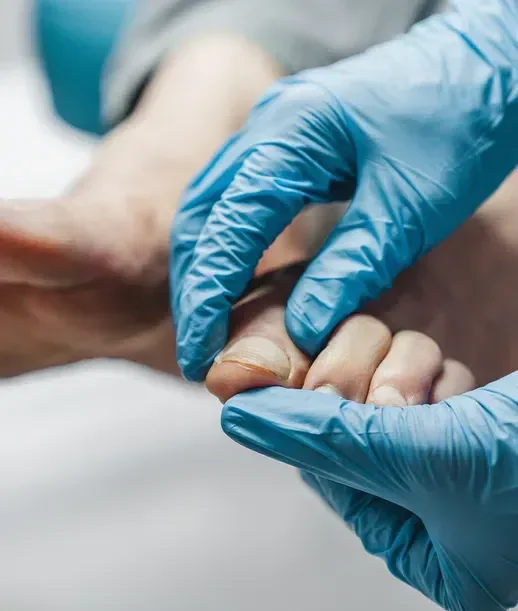
Does any of this sound like YOU?
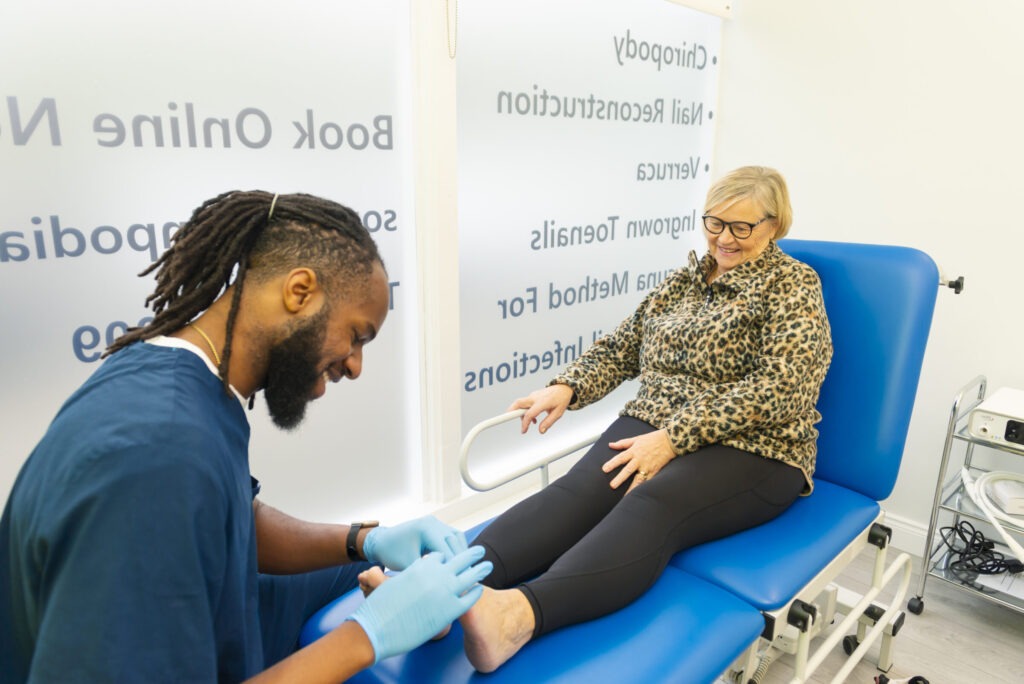
At the South Dublin Podiatry, we understand the discomfort and pain that ingrown toenails can cause, and we want to provide our readers with valuable information on how to treat this issue.
An ingrown toenail is a painful condition that occurs when the edge of the toenail grows into the surrounding skin. While it commonly affects the big toe, it can develop in any toe on the foot. The symptoms of an ingrown toenail include pain, redness, and swelling in the affected area.
One of the main causes of ingrown toenails is improper nail trimming. Cutting the nails too short or rounding the edges can encourage the nail to grow into the skin instead of straight out. This can lead to the development of an ingrown toenail.
Additionally, injuries to the toe, such as stubbing it or dropping something heavy on it, can also contribute to the condition. In some cases, individuals may have an inherited nail shape that increases their susceptibility to ingrown toenails.
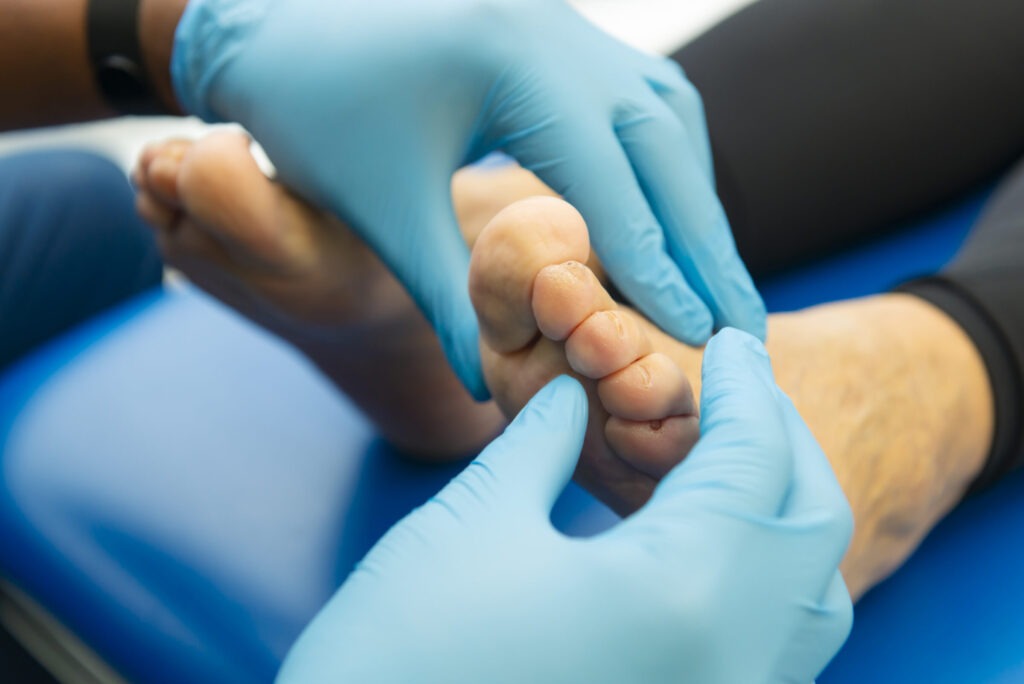
An ingrown toenail can cause discomfort and pain, and it occurs when the edge of the toenail grows into the surrounding skin. Understanding the symptoms of an ingrown toenail is essential for early identification and prompt treatment. While improper toenail-cutting practices are a common cause, there are several other factors that can contribute to the development of this condition. Consulting a qualified podiatrist for a thorough assessment can help identify the underlying causes and create an effective treatment plan.
Symptoms of an Ingrown Toenail:
One of the primary symptoms of an ingrown toenail is pain in the affected toe. The pain may range from mild discomfort to intense throbbing, especially when pressure is applied to the toe or when wearing shoes.
The area around the ingrown toenail often becomes red and swollen. The skin may appear inflamed and feel tender to the touch.
If left untreated, an ingrown toenail can lead to an infection. Symptoms of infection include increased pain, warmth, pus or drainage from the affected area, and the presence of an unpleasant odour.
The discomfort caused by an ingrown toenail can make it challenging to walk normally. This can affect mobility and daily activities.
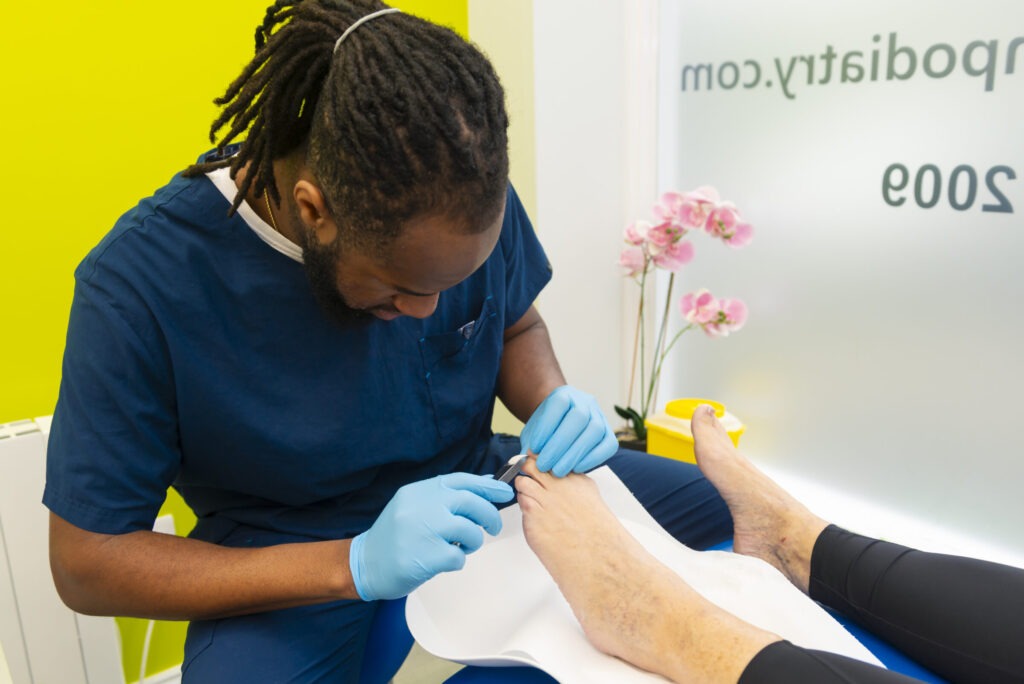
Ingrown toenails are often caused by improper toenail-cutting practices, such as cutting the nails too short or rounding the edges. However, there are several other factors that can contribute to the development of this condition. Wearing tight-fitting shoes, fungal infections, excessive sweating, nail trauma, certain medications, genetics, and foot anatomy can all play a role in the occurrence of ingrown toenails. Understanding the causes of ingrown toenails is crucial for prevention and seeking appropriate treatment when needed.
Symptoms of an Ingrown Toenail:
Cutting the nails too short or rounding the edges can cause the nails to grow into the surrounding soft tissue, leading to an ingrown toenail.
Wearing shoes that are too narrow or tight can put pressure on the toes, increasing the likelihood of the nail growing into the skin.
Fungal infections of the toenails can cause thickening and deformity of the nails, making them more likely to become ingrown.
(Excessive Sweating): Excessive sweating of the feet can soften the skin around the nails, making it easier for the nail to penetrate the skin.
Injuries to the toe, such as stubbing or jamming it, can result in the nail growing abnormally and becoming ingrown.
Certain medications, such as those used to treat nail psoriasis or cancer, can affect nail growth and increase the risk of ingrown toenails.
Some individuals may have inherited nail shapes or foot structures that make them more prone to developing ingrown toenails.
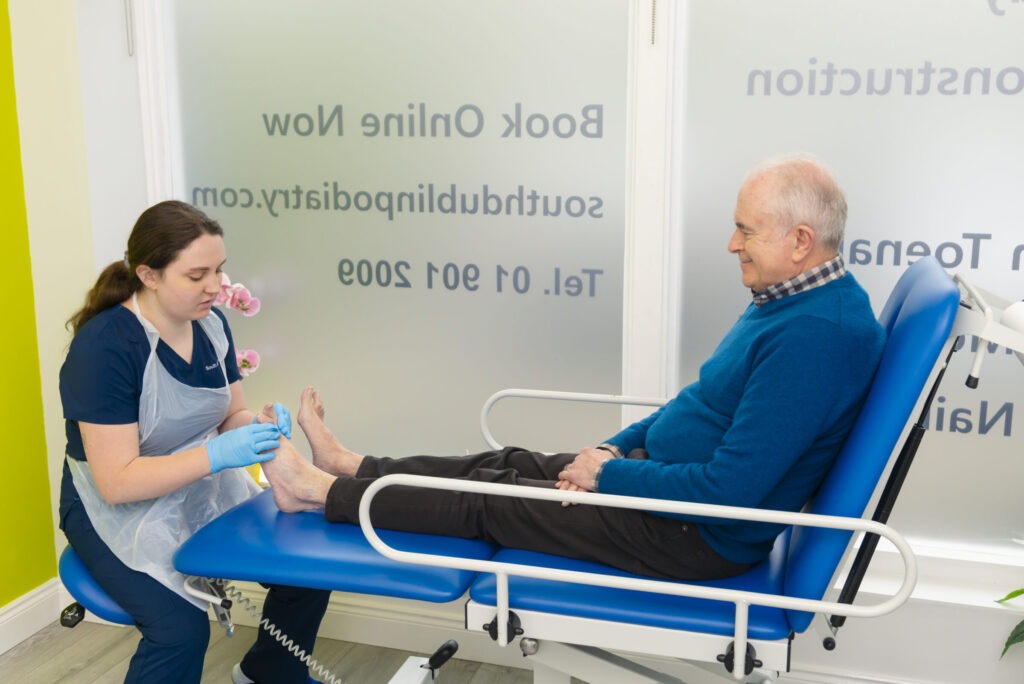
Ingrown toenails can affect anyone regardless of age or background, but some patients face a higher risk of complications. Those who are immunocompromised, have circulation issues, or people with diabetes are particularly vulnerable and should seek prompt treatment to avoid further complications.
Research suggests that 2.5-5% of the population suffers from ingrown toenails, and the prevalence appears to be increasing in recent years. Adolescents between the ages of 12-30 are particularly susceptible to ingrown toenails, with males being affected twice as often as females.
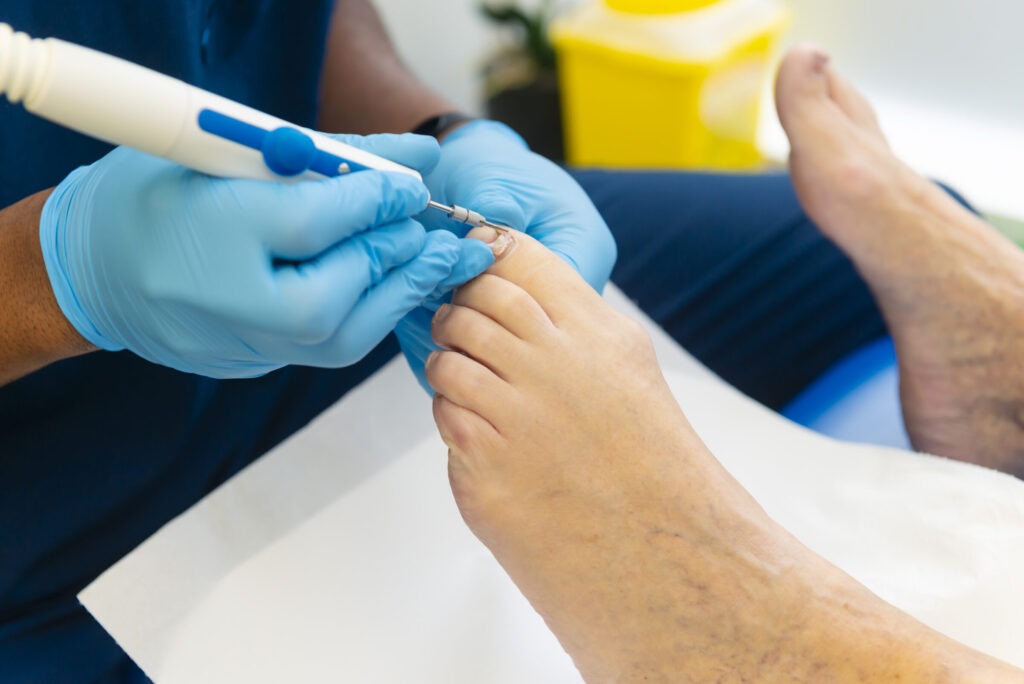
Effective treatment for ingrown toenails requires careful consideration by a qualified podiatrist to achieve optimal outcomes. The appropriate treatment may vary depending on the stage of the diagnosed ingrown toenail, ranging from conservative techniques to surgical interventions.
Conservative methods are typically recommended for mild to moderate cases (stages 1 and 2) of ingrown toenails, while more severe cases (stage 3) may require surgical intervention. Additional internal factors, such as allergies, pregnancy, bleeding disorders, or significant medical histories, can also influence treatment selection. Our podiatrists possess the knowledge and expertise to evaluate and treat various conditions, working closely with you to ensure the provision of the finest care.
Numerous conservative measures are available to treat ingrown toenails, proving highly effective for patients diagnosed in stages 1 or 2.
These measures may include:
Proper footwear selection can ensure adequate room in the toe box, preventing the nails from growing into the surrounding skin.
This involves a podiatrist carefully cutting out the nail spicule with or without local anesthesia. It is often the first-line treatment for mild to moderate cases of ingrown toenails.
This includes avoiding curved cutting and leaving sharp edges, which can contribute to ingrown toenails.
For more severe cases of ingrown toenails (stage 3), surgical procedures may be necessary. These procedures are performed under local anesthesia, which is administered by a podiatrist.
This is an innovative and painless nail correction system which can only be done by a trained health professional, such as our podiatrists at The Foot and Ankle Institute.
It is a great system for those with mild to moderate ingrown toenails or for patients who may not be eligible for surgery. It involves having a small noninvasive silicone like strip placed at the base of your nail and left to grow out, you can then return after 3months at which point a second one can be adhered again to the base. After 2-3 applications it helps train your nail to become straighter, preventing the painful involuted shape.